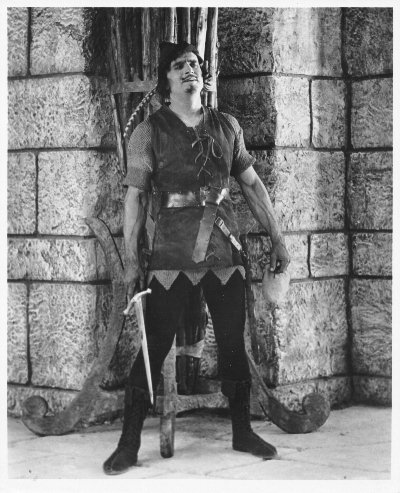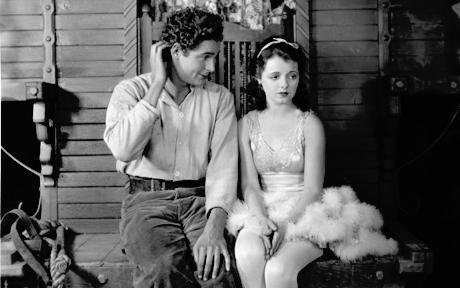Movies in the 1920s
Films Made from 1920 to 1929
The 1920s gave us the National Prohibition Act, the Great Depression, the emergence of jazz, and the rise of communism. Known as the Roaring Twenties, the period also saw motion pictures come into their own, and by the beginning of the ’30s it was an artistic force to be reckoned it (especially with the introduction of “talkies” towards the end of the decade).
While movies in the 1920s may not have had the special effects, monster budgets, or sophisticated plots of modern cinema, they still managed to entertain the masses and have a lasting effect on the pop culture landscape. Many of the clichés introduced in 1920’s cinema are still being used today, and they’ll no doubt continue into the foreseeable future.
The Cabinet of Dr. Caligari (1920) – Director Robert Wiene brought German Expressionism to the forefront with his silent film about a deranged doctor named Caligari (Werner Krauss) and his sleepwalking henchman, Cesare (Conrad Veidt). Highly influential, it was one of the first motion pictures to be told through the use of flashback, and it also introduced the twist ending to audiences. Considered one of the greatest horror movies of early cinema.
The Sheik (1921) – Rudolph Valentino ensured big-screen immortality by starring in this silent romance about an Arab sheik who falls for a spirited white woman (Agnes Ayres). The film was a major success at the box office, and female audiences went wild for Valentino’s looks and flowing robes. Male viewers, meanwhile, laughed out loud or left the theatre in disgust, feeling that Valentino’s appearance and mannerisms were far too effeminate. A marriage between two people of different races was prohibited by law at the time, so a plot twist was required to get the movie into compliance. It all seems silly in retrospect, but The Sheik was easily one of the most controversial films of its time.
Robin Hood (1922) – With a budget of one-million dollars, this swashbuckling Douglas Fairbanks film introduced American audiences to the Robin Hood legend and demonstrated the vast potential of cinematic action sequences. It’s also notable as the first feature film to have a premiere in Hollywood, being debuted at the legendary Grauman’s Egyptian Theatre.
The Covered Wagon (1923) – This tale of pioneers making their way from Kansas to Oregon during the Old West period would have a major impact on the future of the Western. Not only was the budget of over $780,000 one of the highest of the period, but it also put into place such tropes as white folks circling their wagons to stave off attacks from Indians. If you’re a fan of the genre, be sure to catch this silent classic.
The Sea Hawk (1924) – The best high seas tale from the early days of cinema, this Frank Lloyd film stars Milton Sills as an English noble framed for murder, enslaved by Spanish seaman, and eventually transformed into a feared pirate. But when he learns that his true love (Enid Bennett) is about to marry his treacherous half-brother (Lloyd Hughes), he risks it all to save her from a fate worse than death. Adapted from the novel by Rafael Sabatini.
Click here to become a member of Netflix
The Gold Rush (1925) – Set in the harsh landscape of the Yukon during the Klondike Gold Rush, this silent Charlie Chaplin comedy masterpiece features his iconic Little Tramp suffering numerous hardships while looking for love and wealth. This was the film that Chaplin wanted to be remembered for, and his hilarious “roll dance” (accomplished with two dinner rolls, two forks, and plenty of imagination) has enabled it to be one of the best-remembered movies in the 1920s.
What Price Glory? (1926) – The first in a series of films depicting the comedic rivalry between U.S. soldiers Flagg (Victor McLaglen) and Quint (Edmund Lowe). As they risk life and limb in the trenches of World War I, they also try to woo Charmaine de la Cognac (Dolores del Rio), the beautiful daughter of a French innkeeper. Raoul Walsh served as director, and he would return for the first two sequels, The Cock-Eyed World and Women of All Nations.
Love (1927) – John Gilbert and Greta Garbo burn up the screen in a silent film that was originally titled Heat. He plays a Russian count, while she’s the wife of a politician and the object of his carnal obsession. Considered quite erotic for its time, Love was loosely based on Anna Karenina by Leo Tolstoy.
Street Angel (1928) – Janet Gaynor won a Best Actress Oscar for her role as Angela, a lively young woman who goes from being homeless to joining a carnival and falling in love. This silent classic was also nominated for Oscar gold in the categories of Best Cinematography and Best Art Direction.
The Cock-Eyed World (1929) – When they’re not winning battles, a pair of U.S. Marines (Victor McLaglen and Edmund Lowe) compete for the affections of various women in this musical from director Raoul Walsh (White Heat, High Sierra). Conquests include a Spanish beauty (Lily Damita), a hot-blooded Russian (Jeanette Dagna), and a flapper from Brooklyn. A sequel to What Price Glory?.
An appalling number of movies in the 1920s have been lost over the decades, but many silent-era classics are still available and have been transferred over to the DVD format. If you’re a cinematic history buff or just looking for a change of pace from the feeble-minded works of James Cameron, give these black-and-white classics a look. And don’t forget to get yourself a Netflix membership, as you’ll then be able to enjoy all these classics on your TV or personal computer for a low monthly fee.
This entry was posted on Wednesday, June 1st, 2011 at 6:52 pm and is filed under Good Movies. You can follow any responses to this entry through the RSS 2.0 feed. You can leave a response, or trackback from your own site.


